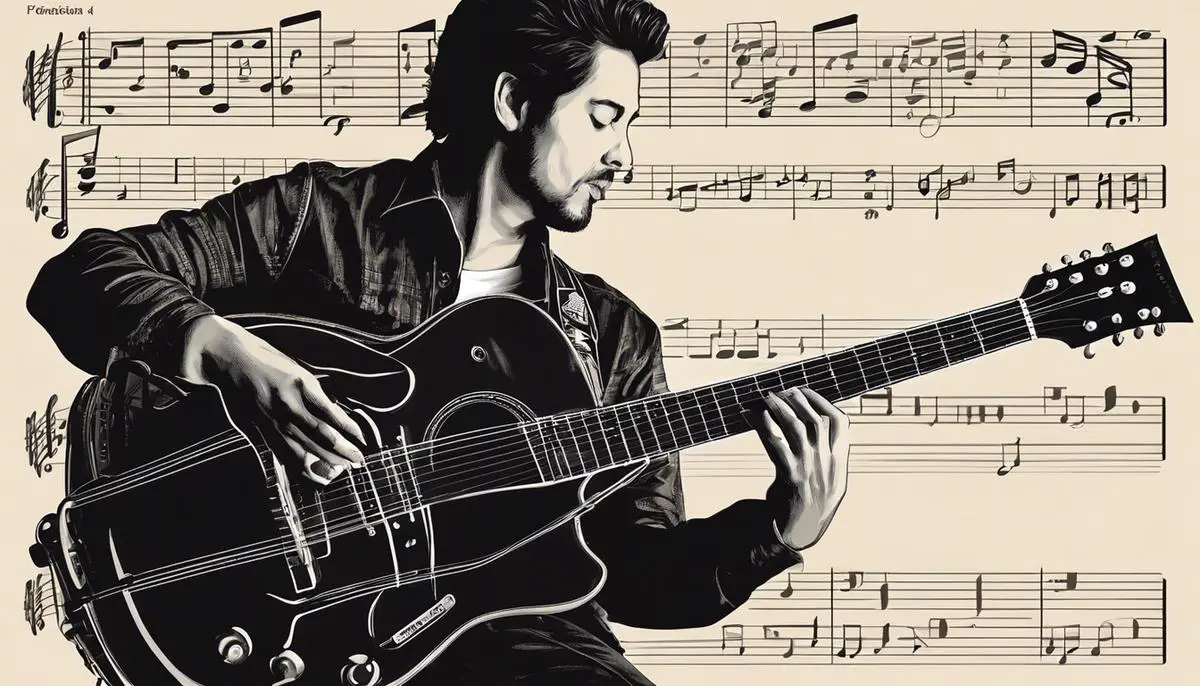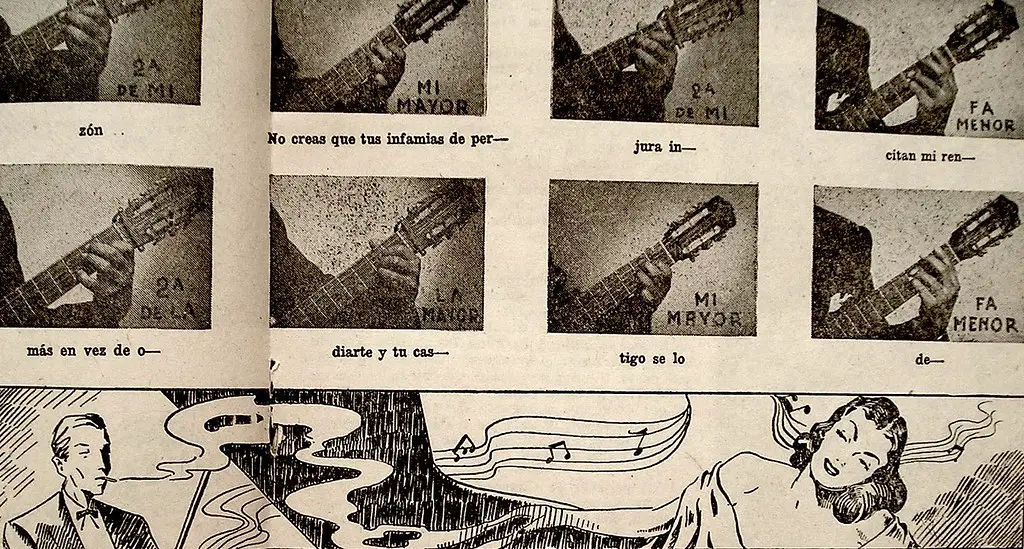The Dorian mode, a bedrock of musical expression, finds its rightful place on the fretboard of the guitar, serving as a versatile tool for crafting emotive melodies and captivating harmonies. Let’s delve into the depths of the Dorian mode on the guitar, exploring its rich tonal palette and unlocking the secrets to wielding its power with mastery and finesse.
What is the Dorian Mode?
The Dorian mode, rooted in the second degree of the major scale, exudes a minor tonality resonating with a distinctively “jazzy” or “bluesy” ambience on the guitar. Renowned for its versatility, this scale serves as a favoured canvas for improvisation in jazz and blues, while also lending its flavourful essence to the landscape of rock and pop music, enriching compositions with its unique character.
The Dorian mode is a seven-note scale, with a pattern of whole and half steps that gives it its distinct sound. The scale formula for the Dorian mode is 1-2-b3-4-5-6-b7, which means that it starts on the second note of the major scale and follows the pattern of whole steps (W) and half steps (H) as follows:
W-H-W-W-W-H-W
For example, if we take the C major scale (C-D-E-F-G-A-B), the Dorian mode built on the second degree would be D-E-F-G-A-B-C. This scale can also also known as the D Dorian mode.
Characteristics of the Dorian Mode
The Dorian mode has a unique sound that sets it apart from other minor modes. Some of its characteristics include:
- A minor third: The third note of the scale is a minor third, giving it a darker sound compared to the major scale.
- A major sixth: The sixth note of the scale is a major sixth, which adds a sense of tension and resolution to the scale.
- A minor seventh: The seventh note of the scale is a minor seventh, which gives it a bluesy sound.
The Dorian mode’s versatility shines through in its ability to adapt to a multitude of musical contexts. Its “jazzy” or “bluesy” undertones, coupled with its compatibility across genres like jazz, blues, rock, and pop, position it as a go-to scale for musicians seeking to infuse their compositions with depth and emotion.
How to Play the Dorian Mode on Guitar
Now that we understand the theory behind the Dorian mode, let’s explore how to play it on the guitar. We will use the D Dorian mode as an example, but the same principles apply to other keys.
Basic Dorian Mode Scale Shape

On the guitar, the fundamental approach to playing the Dorian mode involves utilizing a basic scale shape. This five-fret pattern serves as a foundational framework, easily transposable up and down the fretboard for playing the scale in various keys. Below is the basic D Dorian mode scale shape:
To play this scale, start with your first finger on the fifth fret of the A string and follow the pattern of whole steps (W) and half steps (H) as follows:
W-H-W-W-W-H-W
This will give you the notes D-E-F-G-A-B-C-D, which make up the D Dorian mode scale.
Dorian Mode Scale Patterns
Another way to play the Dorian mode on guitar is to use scale patterns. These patterns are movable and can be played in any key. Here are two common Dorian mode scale patterns:

To play these patterns, start with your first finger on the root note (D in this case) and follow the pattern of whole steps (W) and half steps (H) as indicated by the numbers on the fretboard.
Dorian Mode Chords
Chords are an essential part of any musical scale, and the Dorian mode is no exception. Here are some common chords that can be used in the Dorian mode:
- D minor (D-F-A): This is the tonic chord of the D Dorian mode and is often used to establish the key.
- E minor (E-G-B): This is the second chord of the D Dorian mode and is often used to add tension and resolution.
- F major (F-A-C): This is the third chord of the D Dorian mode and is often used to add a brighter sound to the scale.
- G major (G-B-D): This is the fourth chord of the D Dorian mode and is often used to add a sense of movement to the scale.
- A minor (A-C-E): This is the fifth chord of the D Dorian mode and is often used to add a sense of stability to the scale.
- B diminished (B-D-F): This is the sixth chord of the D Dorian mode and is often used to add a sense of tension and resolution.
- C major (C-E-G): This is the seventh chord of the D Dorian mode and is often used to add a brighter sound to the scale.
Dorian Mode Licks and Solos
One of the best ways to master the Dorian mode on guitar is to practice playing licks and solos in this scale. Here are some tips to help you get started:
- Start slow: Begin by playing simple licks and solos at a slow tempo. This will help you get comfortable with the scale and build muscle memory.
- Use repetition: Repetition is key when it comes to mastering any musical scale. Practice playing the same lick or solo over and over again until you can play it without thinking.
- Experiment with different rhythms: Don’t be afraid to experiment with different rhythms and note durations. This will help you develop your own unique style.
- Listen to recordings: One of the best ways to learn how to play in the Dorian mode is to listen to recordings of songs that use this scale. Pay attention to how the musicians use the scale and try to replicate their techniques.
Dorian Mode in Different Keys
So far, we have focused on the D Dorian mode, but this scale can be played in any key. Here are some other common Dorian mode scales:

- B Dorian mode (B-C#-D-E-F#-G#-A-B)
- F Dorian mode (F-G-A-Bb-C-D-E-F)
- G Dorian mode (G-A-B-C-D-E-F#-G)
To play these scales on guitar, simply use the same patterns and shapes we discussed earlier, but start on a different root note.
Conclusion
The Dorian mode is a versatile and unique scale that can add a new dimension to your guitar playing. By understanding its characteristics and practising different patterns and licks, you can master this scale and use it in a variety of musical contexts. So grab your guitar and start exploring the world of the Dorian mode!




